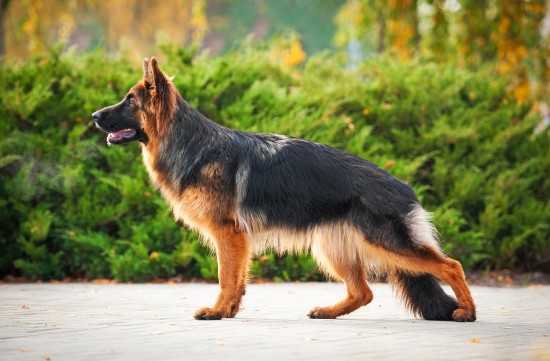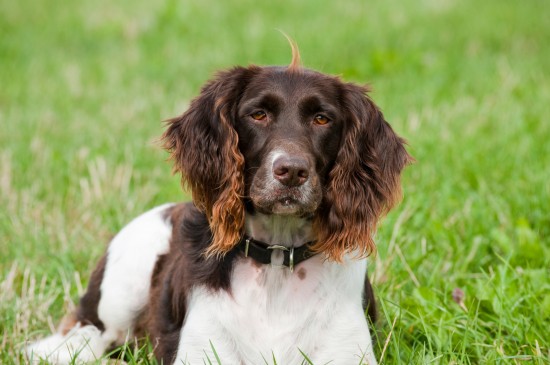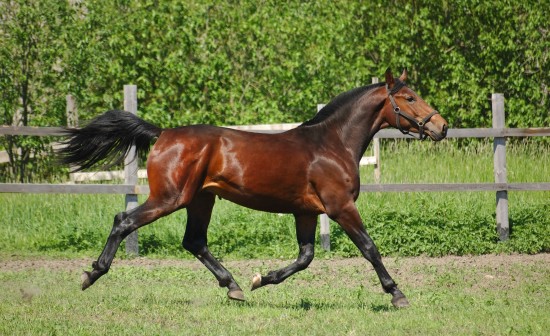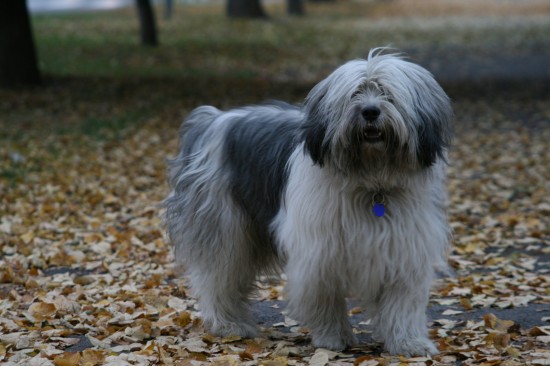
A happy dog is one with at least basic obedience skills. If your dog is doing what you want her to do then you are pleased and that means your dog is pleased. Teaching your dog basic obedience skills is rewarding but it can also be frustrating. Here are some basic training techniques to get you started.
Once you have her attention, the lessons can begin
If your dog is to learn anything the first thing you have to do is to get her to pay attention to you. Start by calling her name and then using a command word like “watch”. Use the same word consistently. This way, she will associate the word to a command.
Next you need to keep her attention for a short period. Try some attention exercises. Hold a toy or dog treat near your mouth and then say the attention command word. Each time she takes the time to watch, praise her. The more you practice this exercise, the more time she will pay attention to you. Try getting her to watch for a minute or more. Let her know that she is doing a good job by rewarding her with a treat or exuberant praise.
Basic training for you
When training your dog you need to keep a few simple rules in mind:
- Do not hurt your dog, ever. This will cause her to become shy or aggressive. It will also mean that you are a bad person that does not deserve to have a loyal and trustworthy friend, canine or human.
- If the training doesn’t go as quickly as you would like and you start to get frustrated don’t let this negative emotion show. Dogs are very good at reading your body language. If you are upset your dog will be as well. It’s better to postpone training then to train when you are feeling upset or frustrated.
- Dogs get distracted pretty easily. If possible choose a training area that is free of distractions like other pets, children or loud noises. If your dog becomes distracted during training sessions try changing the tone of your voice. Don’t raise your voice, change the tone as in higher or lower pitch.
- Keep training sessions short, around 20 minutes or so, less for a very young dog. It’s better to have several sessions each day then to have one or two over-long sessions. If you go too long your dog will be thinking about some other fun thing she really should be doing instead.
- Use hand signals along with command words. You’ll find they come in very handy later and it’s easy for your dog to learn command words and hand signals at the same time. There are no standard hand signals so use signals that are large and easy for your dog to see, that you are comfortable with and will remember.
- Be consistent. Being consistent is a key factor in all training. Use the same command words and hand signals every time. Make sure everyone who might give your dog commands, husband, kids, use the same command words and signals.
First, it’s best to sit
The first and easiest command to start with is the command to sit. Start by gently pushing her backside down while gently pulling up on her collar and saying the word “sit.” You’ll be surprised at how fast she learns this. Once she sits with the command word, and you have a free hand, start using the hand signal as well.
The usual hand signal for “sit” is to point at the ground with your fingers extended downward. Every time you say the command word “sit”, point at the ground simultaneously. Your dog will learn the voice command and the hand signal command at the same time.
If your dog is very young try the treat approach to the sit command. Hold a treat in your hand and then slowly move the treat over your puppy’s head. The intention is to get the puppy to smell the treat and follow it with her nose. She has two options. She can either walk backwards or sit down. It’s easier to sit down. When she sits say the command word, give her the hand signal, praise her to the moon and stars and give her the treat.
Jumping up and lying down
The “down.” command is very important for your dog to learn. Dogs become excited sometimes and jumping up on you and other people is often the result.
When your dog jumps up tell her “down”. Don’t pet her or act glad to see her she while she is on you. Continue to tell her “down” until she does so. You may have to physically place her on the floor while repeating the word “down”.
You can take this command a step further by gently pushing your dog onto her belly on the ground while repeating the command word. With repetition she will eventually learn to lie down on command.
The usual hand signal for this command is to hold your hand out flat and then repeatedly move it downward a few inches like you would if you were trying to shove one more thing into an over-full suitcase.
Teaching the “stay” command
Teaching your dog to stay on command can be a tough one and you will have to be very patient. It’s an important command though and could save your dog’s life if you encounter a dangerous situation. It’s best if your dog is already good with the sit command before you start teaching this one.
Have your dog sit or lie down. Say the word “stay” and hold your hand palm out right in front of your dog’s nose. Praise her lavishly. Do this many times.
Now, give your dog the stay command and move backward away from her a short distance, three or four feet. When she starts to get up, and she will, hold your hand out at arms length, palm out and say, “stay”, emphatically. Have her sit again and repeat the whole process. Eventually she’ll get the idea. She won’t stay for long though so when she looks like she is about to stand up give her permission to do so by saying a release command. I use the word “okay” and a thumb up gesture for a hand signal.
Once she stays sitting when you are a few feet away you can start reinforcing the command with treats or toys. Put a treat in your pocket and have your dog sit and stay. Take the treat out of your pocket and put it on the ground in front of you. She will immediately start to get up. Hold out your hand, tell her to “stay”, put the treat back in your pocket.
Keep doing this with patience and good humor until she stays even though the treat is on the ground in front of you. Then pick up the treat and carry it to your dog, don’t let her come to the treat. Let her have her treat and praise her with lavish enthusiasm. Give her the release command and then go have some fun with her. Do this many times.
If you are patient and consistent with this one you’ll be able to train your dog to stay put for a long time even though you are nowhere to be seen.
The “come” command
If everyone would teach their dogs to come on command it would save a lot of shouting, frustration and neighborly angst. The pity is that it’s quite an enjoyable command to teach your dog because you get to move around a lot.
Start off simply. While attached to a leash about six feet in length have your dog sit and stay. Walk away the length of the leash being sure not to tug on your dog at all. Turn to face her, say “come”, gesture with the come hand signal and gently reel her in with the leash until she is right in front of you. Slather on the praise. The usual “come” hand signal is to stretch your arm out straight in front of you and then move it back to your chest by bending your elbow.
She may be a little confused at first because she thinks she is supposed to stay but be enthusiastic and she’ll get the idea that this is a new command. Once she comes to you have her sit and stay again, move away from her and do all again. Every time you have her in front of you lay on the praise.
You will have to repeat this procedure many times. Once you think she has the idea give her the come command and signal but don’t pull on the leash. If she comes to you make sure she knows that she is the smartest and best looking dog in the world.
Once she will consistently come to you without any tugging on the leash take the leash off and practice some more, practice a lot more.
The real challenge with this command is to have your dog come to you even when she is a long way off and there are other things she would rather be doing. The solution is a very long leash.
Buy a hundred foot spool of thin lightweight nylon cord and practice the procedure in an open field. Start from about ten feet away and slowly increase the distance. Once she comes to you consistently from a distance you can set up distractions. Have a couple friends a toss a ball back and forth near your dog and then start the whole procedure again.
When you are confident that your dog understands the come command it’s time to test her training off leash. There is a good chance she’ll ignore your command. Put the leash back on, practice from a short distance, take the leash off and again practice from a short distance. Gradually increase the distance. Be patient and kind.
Never, ever reprimand your dog after she has come to you!
Your dog will associate a reprimand with the last thing you told her to do, not something she did before that. Say you see your dog ripping up your neighbor’s flowerbed. You command her to come. She does so and then when she gets there you speak harshly to her for ripping up the flowerbed. She will not understand that you are upset because she was damaging your neighbor’s flowers, she’ll think your upset because she came to you as commanded and will be very confused. Reprimanding your dog after she has obeyed a command is a great way to make your dog neurotic and to destroy all the training she’s had.
Giving your dog basic obedience training is just about the best thing you can do for her and for yourself. Your dog wants to please you. If she is well trained and knows the rules she will be able to please you all the time and that will make her very happy. Training your dog is fun and easy if you remember to liberally apply the three key training components, be kind, be patient, be consistent.
Best Wishes,
Discover how you can reduce vet fees and keep your dog healthy and happy… http://dogandpuppyhealth.com/guide Get free dog health and dog training information at http://dogandpuppyhealth.com
 Good Exercises For Your Dog’s Hindquarters
Good Exercises Fo
Good Exercises For Your Dog’s Hindquarters
Good Exercises Fo
 10 Faqs About The Mismate Injection
10 Faqs About The
10 Faqs About The Mismate Injection
10 Faqs About The
 5 Steps for Choosing a Veterinarian
5 Steps for Choosing a Veterinarian
For most A
5 Steps for Choosing a Veterinarian
5 Steps for Choosing a Veterinarian
For most A
 Breeds Of Sport Horses
Breeds Of Sport H
Breeds Of Sport Horses
Breeds Of Sport H
 Owczarek Nizinny – The Friendly Polish Lowland Sheepdog
Owczarek Nizinny
Owczarek Nizinny – The Friendly Polish Lowland Sheepdog
Owczarek Nizinny
Copyright © 2005-2016 Pet Information All Rights Reserved
Contact us: www162date@outlook.com